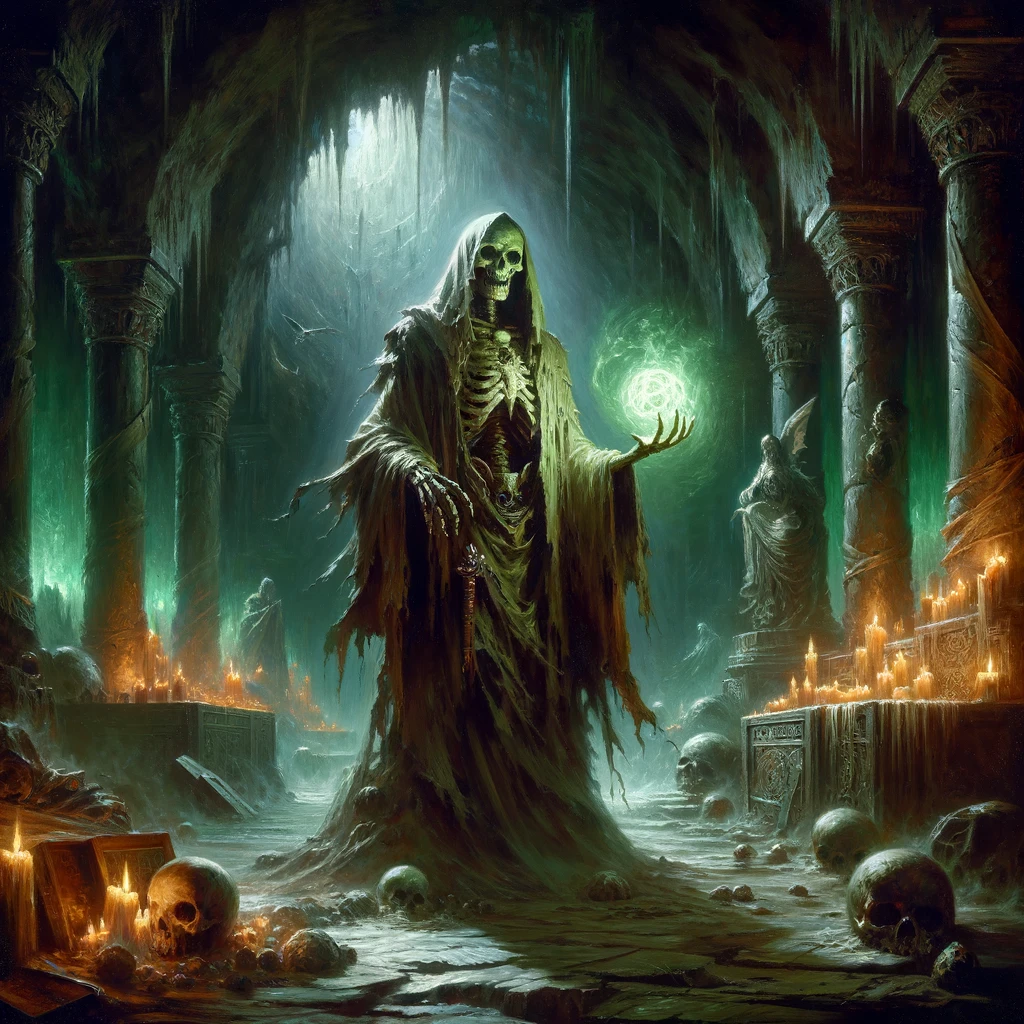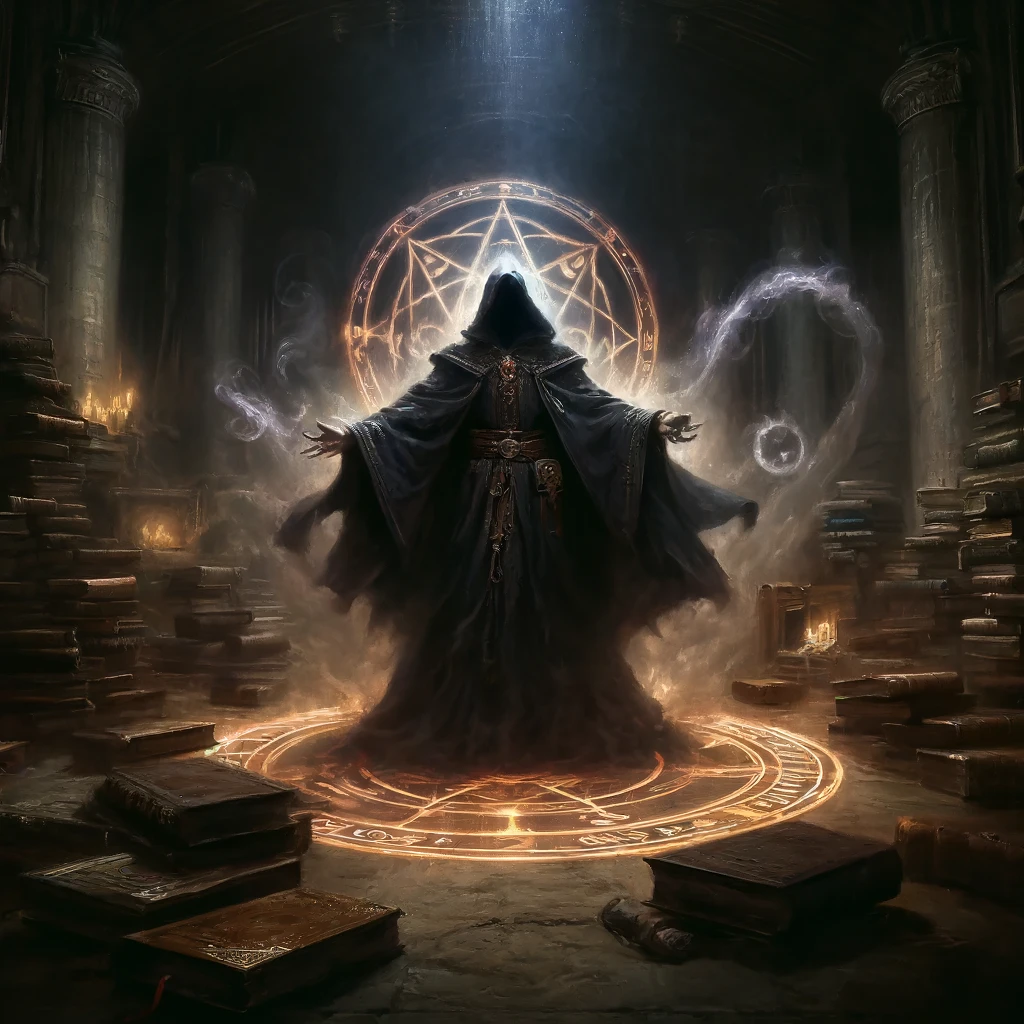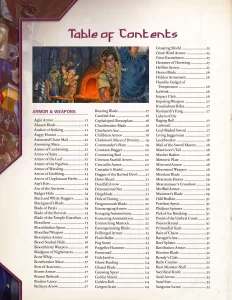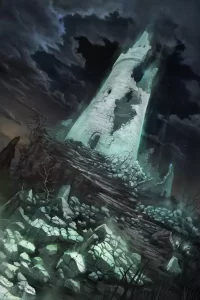
Playing as a Lich in Dungeons & Dragons
Playing as a lich in Dungeons & Dragons offers a unique role-playing experience that explores themes of immortality, power, and the moral dilemmas that come with them. Liches, in D&D lore, are powerful spellcasters who have transformed themselves into undead creatures to achieve eternal life. This transformation comes at great cost, involving dark magic and usually the sacrifice of souls. Here's a guide to embracing this dark path in your D&D campaigns, covering the mechanics, role-playing aspects, and potential narrative arcs.
The Path to Lichdom
The process of becoming a lich is steeped in arcane lore, surrounded by numerous safeguards, and often involves a journey fraught with both physical and ethical challenges. The pursuit of such dark power generally necessitates the unearthing of ancient texts and forbidden rituals, known only to a select few. The spellcaster must undertake a relentless quest for this esoteric knowledge, often delving into lost crypts, haunted libraries, and forsaken temples where such secrets have been buried away from prying eyes. This journey isn't merely about acquiring power but also resisting the numerous dangers that shadow such forbidden paths, from rival necromancers to holy crusaders bent on preventing such abominations from arising.
Moreover, the ritual of becoming a lich requires not just vast arcane knowledge but also significant personal sacrifices and the crossing of moral boundaries that most dare not even consider. The creation of a phylactery, a lich's lifeline, typically involves acts of unspeakable evil, such as the taking of lives and the binding of souls. These acts forever alter the caster's essence, intertwining their fate with the dark energies of necromancy. The transformation irrevocably changes the spellcaster not just physically, becoming undead, but also spiritually and psychologically, as they sever most ties with their former humanity to embrace a solitary existence defined by their thirst for everlasting knowledge and power. This profound shift is a core aspect of what makes the choice of lichdom a pivotal moment in a character's story, marking a point of no return where they must navigate the complexities of their new existence, forever caught between the realms of the living and the eternal solitude of undeath.
Becoming a lich is not a decision made lightly nor a transformation that happens overnight. It is the culmination of a life dedicated to the pursuit of power and the arcane secrets of undeath. Here are the steps typically involved:

- Seeking Forbidden Knowledge: The character must first gain the knowledge of lichdom, which is often hidden in dark tomes or can be learned from other undead or fiendish entities. This quest itself can span large portions of a campaign.
- Creating the Phylactery: The most vital part of becoming a lich is creating a phylactery, an object used to store the lich's soul. Crafting a phylactery requires rare materials, a deep understanding of necromancy, and often a sacrifice of lives or souls.
- The Ritual of Transformation: The actual transformation involves a ritual that typically ends with the spellcaster's death, followed by their resurrection as a lich. This process is fraught with dangers, not least of which is the possibility of failure, which can lead to a loss of sanity or worse.
Mechanics of Being a Lich
Playing as a lich involves several mechanical aspects that need to be considered:
- Undead Nature: Liches are undead, which means they have specific traits such as immunity to poison, disease, and many conditions that affect the living.
- Necromantic Powers: A lich has access to powerful necromancy spells and can control undead creatures. Their spellcasting abilities are significantly enhanced.
- Dependency on the Phylactery: The lich's existence is tied to the phylactery. As long as the phylactery remains intact, the lich can rejuvenate after its physical form is destroyed.
Role-Playing a Lich
Role-playing a lich offers a rich vein of narrative and character development opportunities:
- Moral Ambiguity: Embracing lichdom can lead to fascinating role-playing situations involving moral ambiguity. The character's transformation might lead them to question their former beliefs and align with darker forces.
- Fear and Influence: As a lich, the character instills fear and commands respect from both allies and enemies. This can shift the dynamics within the party and with NPCs.
- Isolation and Goals: Many liches experience isolation due to their nature. Players can explore themes of loneliness, the pursuit of arcane knowledge, or the conquest of death itself.
Narrative Arcs and Campaign Impact
Integrating a lich player character into a campaign can significantly influence its direction. Here are some potential narrative arcs:
- Quest for Immortality: The quest for lichdom itself can form a compelling campaign arc, where the player seeks out ancient artifacts, forges alliances with nefarious entities, and ultimately undergoes the transformation.
- Power Struggles: As a lich, the player might seek to expand their dominion, leading to conflicts with other power players-both mortal and immortal.
- Redemption or Damnation: The story could focus on the lich's struggle with their new form, exploring whether they succumb to the dark nature of their powers or seek redemption.
Playing as a lich in D&D allows for deep, complex storytelling and character development. It challenges players to think beyond the typical confines of mortality and morality, presenting a path fraught with peril but rich with narrative potential. Whether as a villain or a dark hero, a lich character can truly transform the dynamics of a D&D campaign, making every choice and consequence resonate across the realms of the living and the dead.
Beyond individual goals and ethical considerations, playing as a lich offers a distinctive opportunity to explore the broader implications of necromancy within the D&D world. This includes the reactions of the world's inhabitants to a lich's presence, ranging from outright hostility and fear to uneasy alliances and manipulation. Political entities, religious groups, and other power brokers may see the lich as a threat to their authority, a tool to be used, or a menace to be destroyed. This sets the stage for complex narrative scenarios where the lich must navigate treacherous political landscapes, possibly altering the course of kingdoms or entire planes of existence.
Furthermore, the eternal nature of a lich introduces unique storytelling perspectives on time and history. A lich character, being immortal, can witness the rise and fall of empires, the evolution of cultures, and the long-term consequences of events that shorter-lived races would never see. This can enrich the campaign with a deep sense of history and continuity, where the lich may work towards goals that span centuries, involving plans and machinations that unfold over longer timelines than usual D&D campaigns might explore. This long view can fundamentally change how quests are structured and how narratives unfold, offering a fresh and intriguing twist to the role-playing experience.






